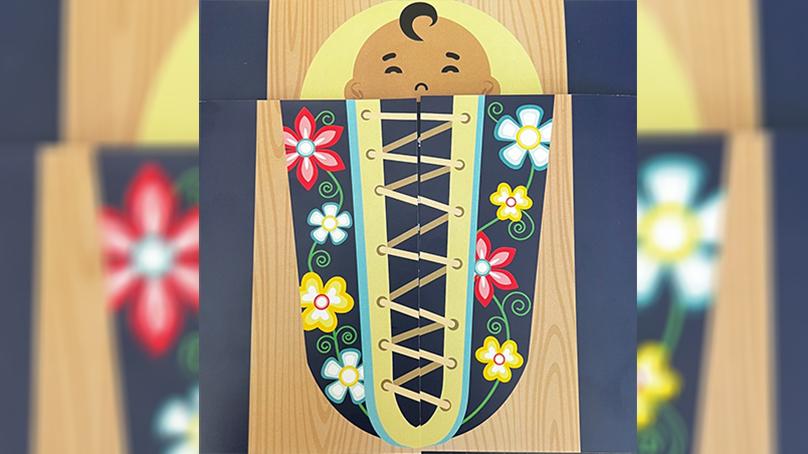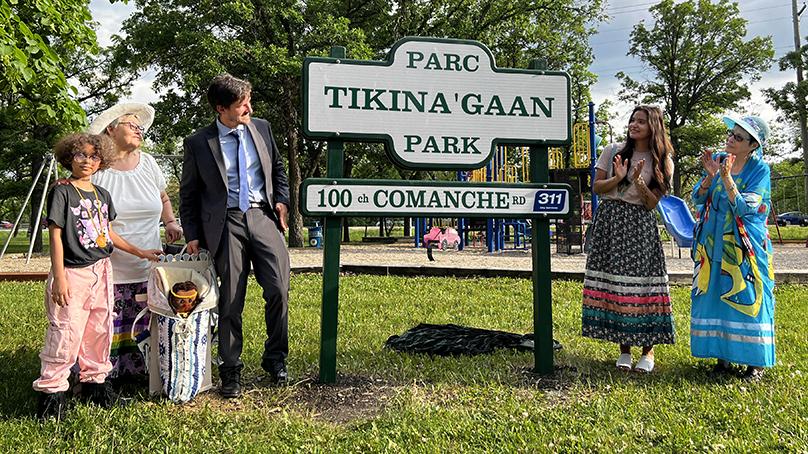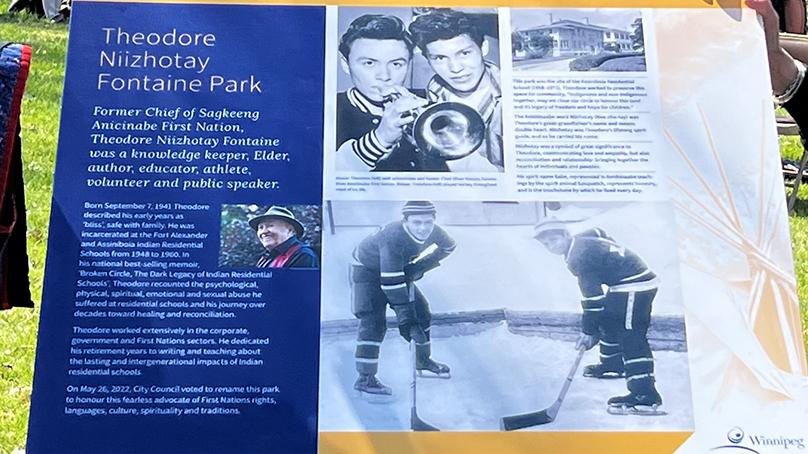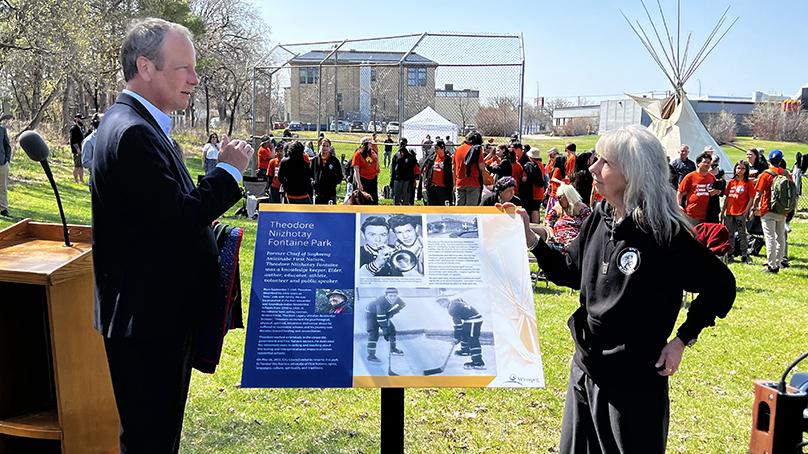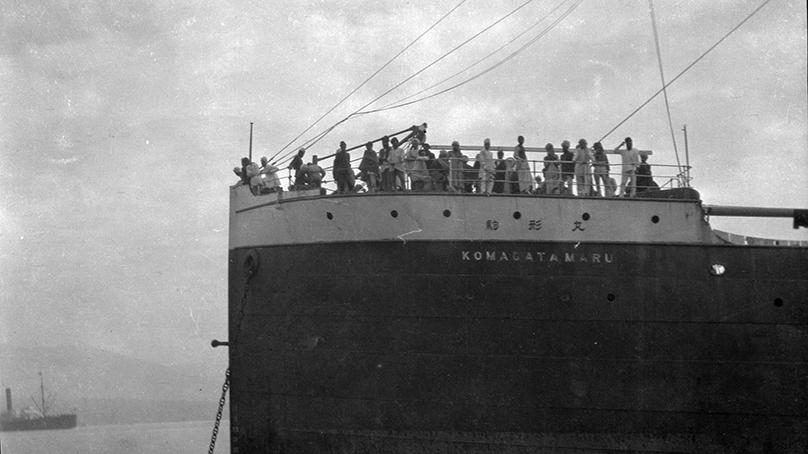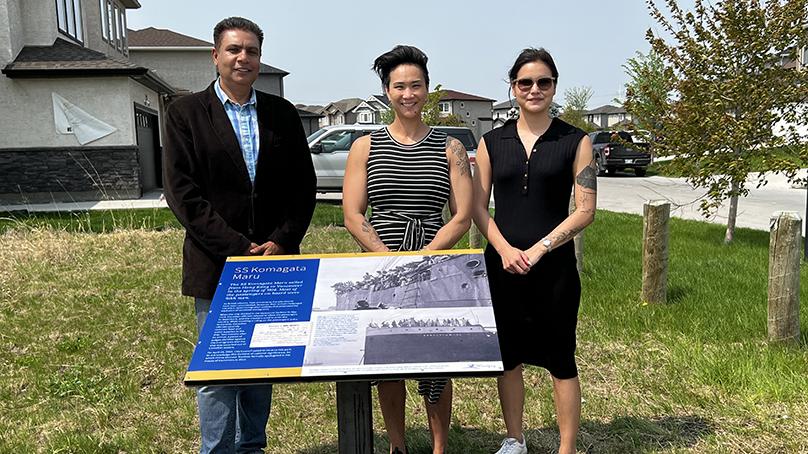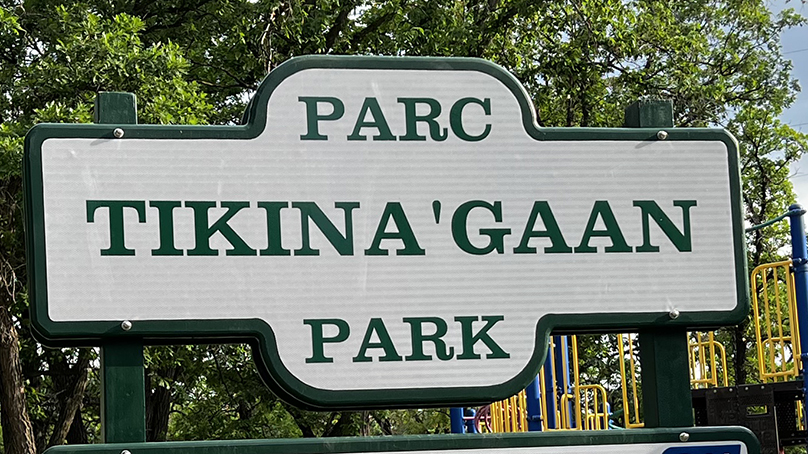
With a playground featuring slides and swings, the newly renamed Tikina’gaan Park is a great place for children to have fun and enjoy the warm weather, but its previous name wasn’t welcoming for everyone.
The Niakwa Park space was once called Papoose Park, a word often used by European settlers as a catch-all racial slur directed at First Nations, Métis and Inuit children. In November 2021, the Indigenous Relations Division met with the four Elders of the Indigenous Naming Knowledge Circle. After careful deliberation and discussion, the Elders ultimately recommended a name: Tikina’gaan Park
“It was an unsuccessful attempt to honour Indigenous children,” said Cecil Sveinson, Manager of the Indigenous Relations Division. “It was in this spirit that the new name of Tikina’gaan Park was chosen.”
The tikina’gaan is a traditional cradle board used by a number of Indigenous peoples. It was typically made out of wood, with a cushioned backing. Once properly bundled, the baby would be securely bound to the cradleboard by leather ties.
“An infant starts their journey in the comfort and safety of the womb, and after birth they are thrust into a very different world,” said Sveinson. “The tikina’gaan was a way for Indigenous people to simulate that time spent in the womb, allowing the child to view the world while still feeling safe and comforted.”
Welcoming Winnipeg Policy
The park was renamed through the Welcoming Winnipeg: Reconciling our History Policy. This policy guides us in making decisions regarding requests to create new, add to, or remove/rename historical markers and place names. An important part of the reconciliation process, its goals include ensuring that Indigenous perspectives, experiences and contributions are remembered and commemorated, as well as to supporting the telling of the complete history of Winnipeg.
Naming requests are reviewed by the Committee of Community Members, which provides a recommendation to the Executive Policy Committee (EPC) and Council for final decision.
Theodore Niizhotay Fontaine Park
Since the policy was introduced in 2020, several renamings have taken place. Earlier this spring, an educational marker for Theodore Niizhotay Fontaine Park was unveiled in the former Wellington Park along Wellington Crescent.
During his life, Theodore Fontaine was a Chief and Sagkeeng Anicinabe First Nation knowledge keeper, Elder, author, educator, and public speaker who dedicated his final years to preserving the history of the Assiniboia Indian Residential School and in engaging the River Heights community with its presence in their neighbourhood. He passed in 2021.
“Theodore led such an incredible life, of service and inspiration and care for others,” said Danielle Carriere, Administrative Coordinator of the Indigenous Relation Division.
It is wonderful that Winnipeg residents now have a place to gather, where we recall and reflect on his contributions and teaching.
He passed in 2021.
Komagata Maru Park
Interpretive panels are being installed in many of the parks renamed through Welcoming Winnipeg. This includes one in Komagata Maru Park in Inkster Gardens.
After Council approved the renaming from Singh Trail Park in 2022, the new park sign was unveiled late last month and recognizes the SS Komagata Maru. This ship, with mostly Sikh men as passengers, sailed from Hong Kong to Vancouver in 1914. As British citizens, their entrance to Canada should have been uncontested. However, their arrival challenged Canada’s racist immigration policies at this time.
Passengers were refused to disembark and their food and water supplies were rationed by Canadian officials. Unfortunately, two months after its arrival, judges decided against the immigrants, and the ship was escorted out of Canadian waters.
All residents are encouraged to visit the renamed parks and take in the interpretive panels that shares the stories behind the names.
If you would like to apply to create new, add to, or remove/rename historical markers, you can submit a request.

